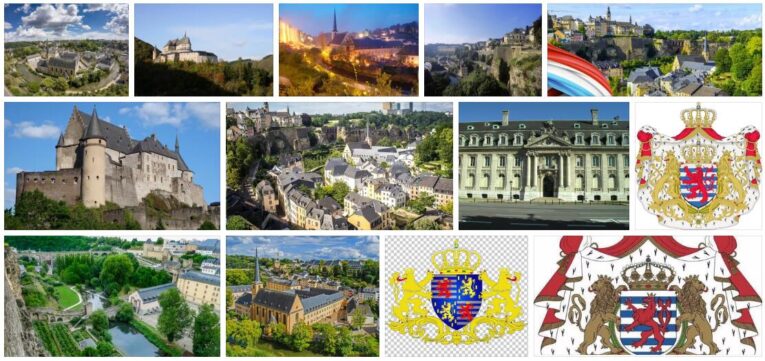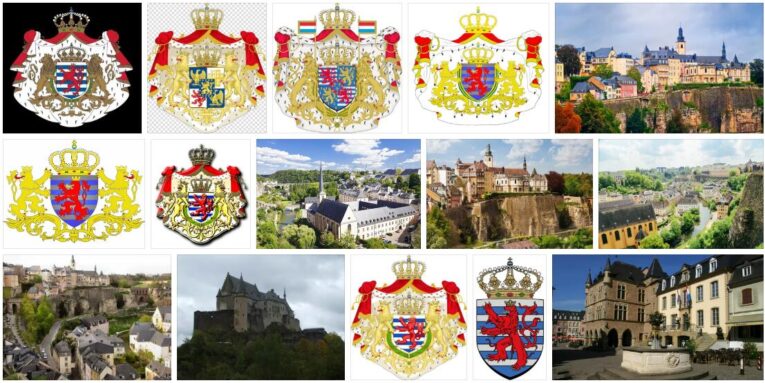Abbreviated as LU by ABBREVIATIONFINDER, Luxembourg is a small state in western Europe. Together with Belgium and the Netherlands, it forms the Benelux countries. The Grand Duchy is one of the strong industrial and service nations in the EU. The natural area is divided into the sparsely populated low mountain range of the Ösling in the north and the flat, undulating Gutland in the south. The capital and residence city of Luxembourg is also located there.
The Grand Duchy of Luxembourg, French Grand-Duché de Luxembourg, Luxembourgish Grand Duchy of Lëtzebuerg, is a small state in Western Europe. Luxembourg borders Germany to the east, Belgium to the west, and France to the south. The capital of the same name lies on a rock surrounded by the rivers Alzette and Pétrusse.
Natural space
Despite its small size, Luxembourg is part of two major landscapes. The north of the country, Ösling or Eisslek, is part of the Ardennes, which belong to the European low mountain range. The area is covered by extensive forests, green spaces and heather. The highest point is the 559 m high Buurgplaatz. The larger and flatter south, the Gutland, is part of the Lorraine layer level country. It has fertile soils and valuable iron ore deposits (minette). The main rivers are the Sauer and the Moselle, which form the south-eastern border.
The climate is an Atlantic-continental transitional climate with mild winters and moderate summers. In the cooler north, up to 1000 mm of precipitation falls annually, in the south it is around 700 mm. More than a third of the land area is made up of mixed forest.
Important data about the country
| Surface: | 2,586 km² |
| Residents: | 459,000 |
| Population density: | 177 residents / km² |
| Growth of population: | 1.4% / year |
| Life expectancy: (men / women) |
74/80 years |
| Form of government: | constitutional hereditary monarchy |
| Capital: | Luxembourg |
| Languages: | French, Luxembourgish and German are official languages |
| Religions: | more than 90% Catholics |
| Climate: | moderate transitional climate |
| Land use: | Arable land 29%, forest 35%, pasture land 32% |
| Economic sectors: (share of GDP, 2003) |
Agriculture 0.6%, industry 20.5%, services 78.9% |
| Export goods: | Iron and steel, consumer goods |
| Gross domestic product: | $ 26,496 million (2003) |
| Gross National Product: | US $ 45,740 / residents (2003) |
Economy and Transport
Luxembourg is one of the highly developed industrial and service countries in the EU. The country has the highest per capita income in the world. With the Netherlands and Belgium, Luxembourg is part of the Benelux Customs and Economic Union. Low taxes and banking secrecy have made Luxembourg an international financial center. In order to counter the allegations of money laundering and tax evasion, bank secrecy had to be relaxed under international pressure.
The iron ores in the Minetterevier in the south of the country were the only minable resources. Mining was stopped in 1981 because imported iron ore was much cheaper. In order to counteract the export dependency of the steelworks, plastic and pharmaceutical factories, machine and vehicle construction as well as a large tire factory have been built since the 1970’s. A large pumped storage plant works near Vianden an der Our.
The most important branch of agriculture is cattle breeding, with the predominant rearing of cattle and pigs. The most important specialty culture is viticulture in the Moselle valley.
Most of the foreign trade is carried out with Belgium. Germany and the other neighboring countries are the most important trading partners.
The rail and road network is very dense. The only navigable waterway is the Moselle with the inland port Mertert. The international airport Luxemburg-Findel is located near the capital.
History
The Grand Duchy of Luxembourg became independent in 1866 after the dissolution of the German Confederation. In 1951 it was a founding member of the coal and steel union and in 1957 of the EEC. In 1960 the economic union with Belgium and the Netherlands came into force.

